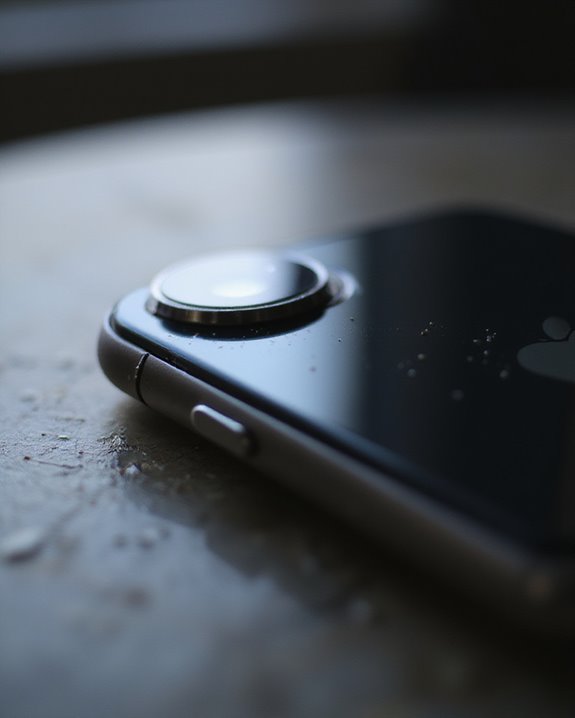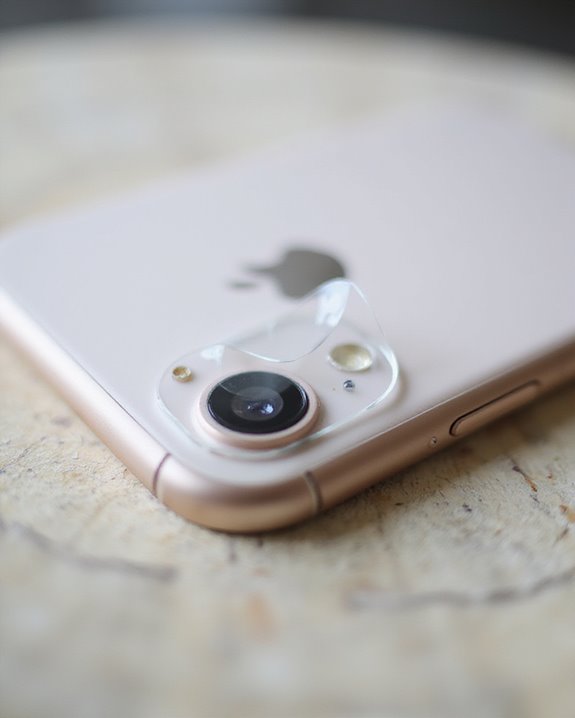Photographers can multiply telephoto lens effects using teleconverters, which increase focal length by factors of 1.4x, 1.7x, or 2x. These accessories extend reach for wildlife, sports, and event photography without purchasing longer lenses, though they introduce trade-offs including 1-2 stops aperture loss, potential sharpness reduction, and slower autofocus performance. For best results, photographers should match teleconverters to their lens brand, use sturdy tripods for stability, and consider optical quality impacts when extending beyond the lens’s native capabilities.
Key Takeaways
- Teleconverters (1.4x, 1.7x, and 2x) can effectively multiply a telephoto lens’s focal length, extending reach for wildlife and sports photography.
- Using teleconverters creates optical trade-offs including 1-2 stops aperture loss, reduced autofocus performance, and potential sharpness degradation.
- High-quality teleconverters work best with premium telephoto lenses, minimizing image quality loss while maximizing focal length extension.
- Manufacturer-matched teleconverters ensure optimal compatibility, maintaining electronic communication between camera body and lens.
- Proper stabilization via tripods becomes increasingly important when using multiplied focal lengths due to amplified camera shake.
Understanding How Telephoto Lenses Create Their Signature Look
What exactly creates the distinctive appearance that telephoto lenses bring to photography? The signature look stems from several optical properties working in concert. Telephoto lenses generate shallow depth-of-field, allowing photographers to isolate subjects against creamy bokeh backgrounds. Bokeh Mechanics play a vital role in this effect, as longer focal lengths naturally produce more pronounced background blur even at moderate apertures.
The lenses also create a compression effect through Perspective Distortion, making distant objects appear closer together than they actually are. This compression flattens the spatial relationship between elements in the frame, producing a stacked or layered appearance. Additionally, the narrow angle-of-view excludes extraneous elements from the composition, further emphasizing the subject while minimizing visual distractions that might compete for attention. The bokeh quality of a lens significantly influences the overall aesthetic, enhancing the dreamy or impactful look of telephoto images.
Practical Methods to Extend Your Telephoto Reach
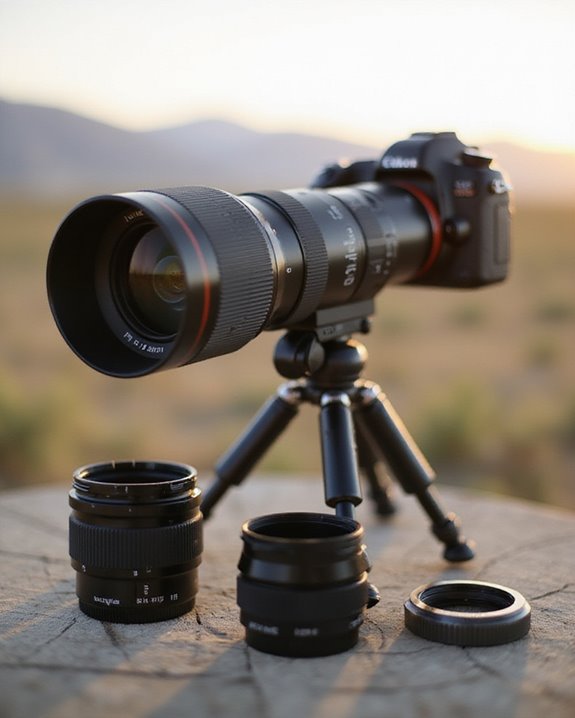
The desire to capture distant subjects often pushes photographers beyond the limitations of their standard telephoto lenses, necessitating creative solutions to extend focal reach. Teleconverters represent the most accessible option, with 1.4x and 2x extenders increasing focal length at the cost of 1-2 stops of aperture, while Nikon’s unique 1.7x extender offers an intermediate solution. Historical techniques, including DIY approaches with meniscus lenses of 2000mm focal length, demonstrate photography’s long tradition of optical experimentation. Additionally, evaluating the focal length range and aperture capabilities of your lenses can help determine the best approach for your specific needs. Modern zoom lens capabilities paired with teleconverters provide flexible alternatives for wildlife and sports photography, balancing extended reach with manageable weight considerations. Specialist high-end options, though limited in availability and expensive, offer extreme focal lengths for professional applications, pointing toward future developments where optical technology may eventually make extreme telephoto capabilities more accessible to enthusiasts.
The Optical Trade-offs When Multiplying Focal Length
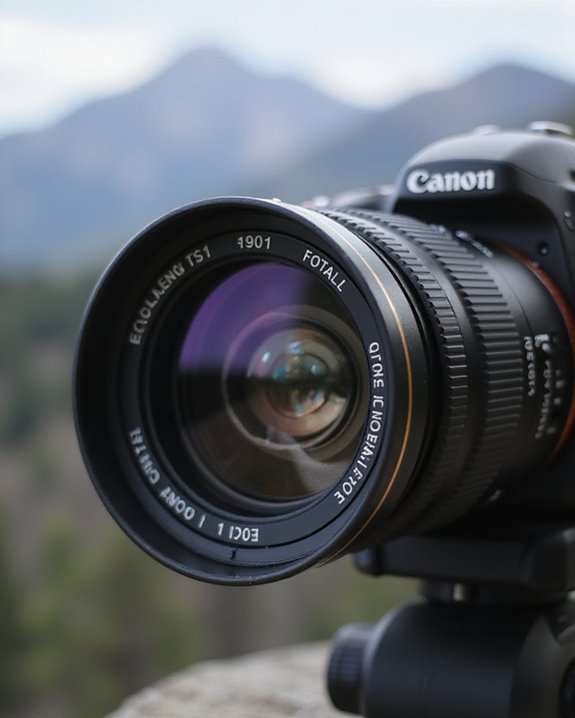
Understanding the optical trade-offs when multiplying focal length becomes essential for photographers seeking extended reach without sacrificing image quality. When extending telephoto capability, photographers face a narrower field of view as the angle of vision decreases, capturing less of the scene while making distant subjects appear larger in the frame. Significant Light Reduction occurs as teleconverters typically decrease maximum aperture by 1-2 stops, requiring longer exposures or higher ISO settings to compensate. Additionally, Aberration Impacts become more pronounced, with potential degradation in sharpness and contrast. Chromatic aberration may increase, particularly with lower-quality multiplication systems. High-end telephoto lenses paired with quality teleconverters can minimize these effects, but photographers must weigh the convenience of focal length multiplication against the inevitable optical compromises affecting image fidelity and low-light performance. Optical compromises also include potential reductions in autofocus speed and accuracy, which can impact capturing fast-moving subjects.
Real-world Applications: When To Use Telephoto Multipliers

When photographers face subjects at extreme distances, telephoto multipliers become invaluable tools in their technical arsenal, extending reach without requiring investment in expensive super-telephoto lenses. Wildlife observation particularly benefits from these optical accessories, allowing photographers to capture intimate details of animals without disturbing their natural behaviors.
Event photography, including concerts and sports competitions, represents another ideal application, enabling clear documentation of subjects from considerable distances when proximity is restricted or impractical. Professional photojournalists frequently employ teleconverters in news gathering situations, maintaining necessary distance while still capturing newsworthy moments with adequate detail. Scientific researchers and travel photographers similarly benefit when documenting subjects at extreme ranges.
These multipliers prove especially useful during emergency situations or when facing budget constraints, offering photographers the flexibility to quickly adapt existing equipment to changing shooting conditions without transporting multiple heavy lenses.
Equipment Recommendations for Maximum Telephoto Effect
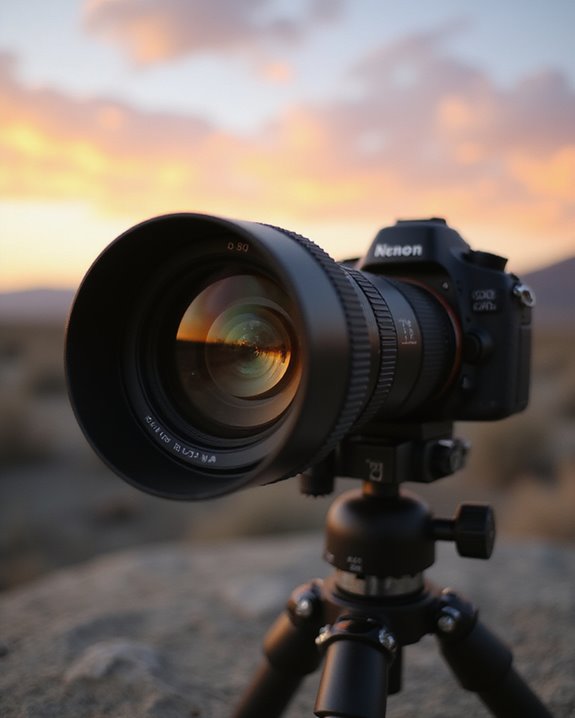
Selecting appropriate equipment forms the foundation for achieving maximum telephoto effects in photography, particularly when extended reach becomes necessary for distant subjects. When investing in teleconverters, photographers should prioritize models from the same manufacturer as their lenses, ensuring ideal compatibility and image quality retention. A high-quality 1.4x teleconverter offers the best balance between increased focal length and minimal aperture loss, while 2x converters provide greater reach at the cost of two full aperture stops.
Tripod Selection becomes critical when using teleconverters, as the increased effective focal length amplifies camera shake greatly. Sturdy carbon fiber tripods with fluid heads offer ideal stability for telephoto work. Additionally, considerate Bag Options, including padded compartments for teleconverters and lens combinations, protect these precision optical instruments during transport while keeping them readily accessible in the field.
Frequently Asked Questions
Can Telephoto Multipliers Work With Vintage Manual Focus Lenses?
Telephoto multipliers can work with vintage manual focus lenses when appropriate adapters are used. However, optical integration may be limited due to compatibility issues between vintage lens mounts and modern multiplier systems.
How Do Atmospheric Conditions Affect Extreme Telephoto Photography?
Through the lens, a mysterious shimmer distorts reality. Extreme telephoto photography suffers greatly from atmospheric interferences, particularly heat haze which warps images and light scattering that degrades clarity and detail over distance.
Are There Smartphone Adapters That Can Multiply Telephoto Effects?
Smartphone adapters that enhance telephoto capabilities exist but don’t truly multiply effects. Adapter compatibility varies across phone models, while lens quality often diminishes when stacking lenses compared to using single high-quality telephoto attachments.
Do Teleconverters Affect Minimum Focusing Distance?
Teleconverters do not alter the minimum focusing distance of a lens. They maintain the same Focus Variations as the original lens, though the working distance may experience slight Distance Shifts due to the added physical length.
Can Image Stabilization Compensate for Teleconverter Light Loss?
No. Image stabilization cannot compensate for teleconverter light loss. Stabilization effectiveness helps reduce camera shake but doesn’t address reduced aperture. Light loss alternatives include increasing ISO or using slower shutter speeds with a tripod.


